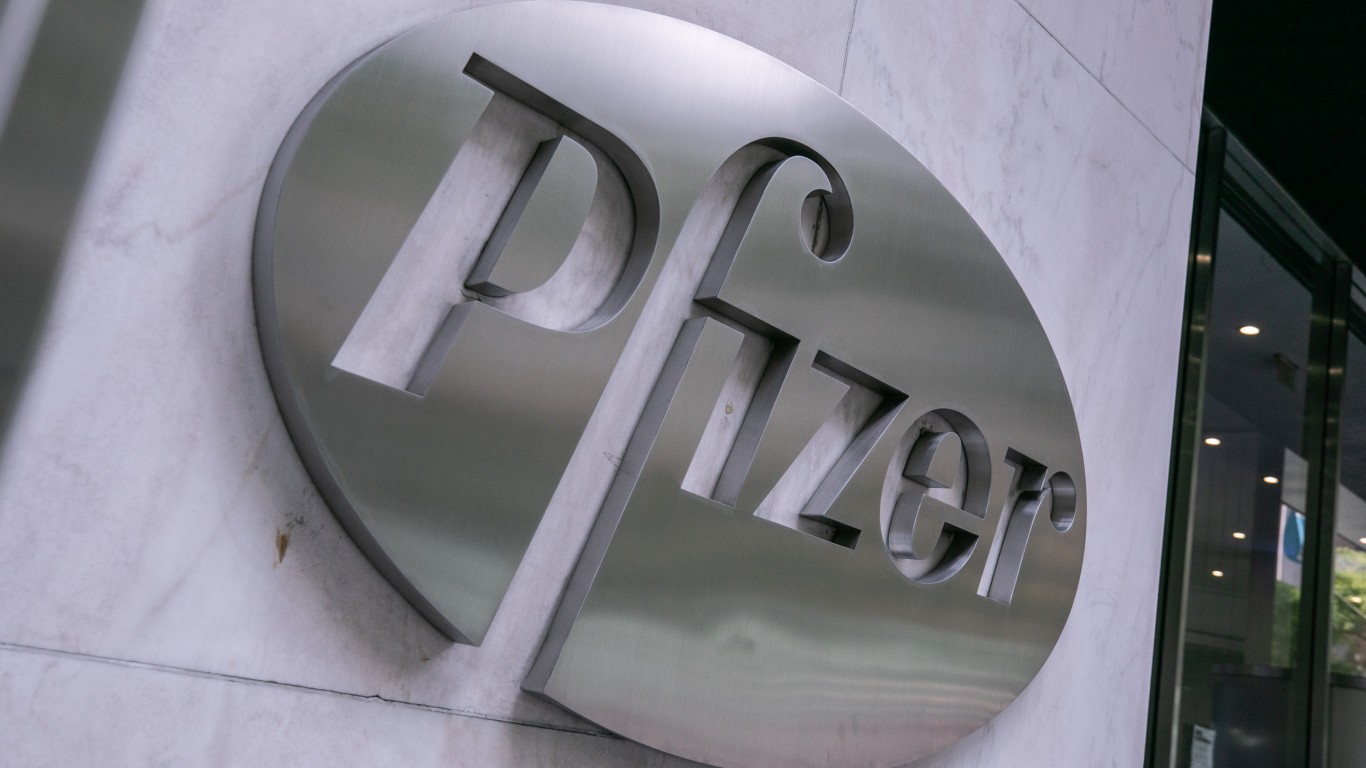Every year there is a general pre-summer saying from investors: Sell in May, and go away! The idea is to miss the summer doldrums and lack of investor interest. One small problem, this market theory is very broad and general, and it often is wrong. Stocks rose in May of 2013, and managed to chug higher and higher to end the year 2013, with gains of almost 30% for the S&P 500 and about 26.5% for the DJIA.
In 2014, it seems to be an odd year for the markets. The bull market has not been ground up into burgers, with the bull market now over five years old without a real correction. Stocks keep fighting each week and month with volatility that ultimately brings new highs.
24/7 Wall St. wanted to make a primer for a “Sell in May and Go Away!” for 2014. The first thing that you will notice is that this thesis will be up for a debate regardless of which side you are on. Many things have not yet occurred that many investors expected. Interest rates have not skyrocketed. Gold did not hit $2,000. Bitcoin came back down to earth. Washington seems to be (at least temporarily) in less of a mood to fight endlessly, but it is an election year.
The 2014 primer for the “Sell in May and Go Away!” thesis is meant to represent some of the same topics in the past, but with both sides. These will also be quick hit points, and will not go on and on.
Economic readings are again showing only modest growth or mild contraction. The reports from January and February were very weak, mostly due to weather (we all hope). First-quarter GDP was a mere 0.1% gain, hardly a gain. Inflation remains well under the FOMC targets. The 6.7% unemployment rate is better than a year and two years ago, but it doesn’t feel strong yet. The bulls will say that the growth is going to be spring-loaded in the second to fourth quarters. The bears will say that the growth is pathetic for a post-recession recovery.
Read Also: Stocks That Could Double in 2014
Corporate earnings are coming out mixed. The trend remains for strong earnings, due to cost cuts and cost containment, but without much revenue growth. Weak emerging markets remain a challenge. The bulls will say that earnings growth is ultimately all that matters. The bears will say valuations are just too high, considering how low the growth is.
Europe is again a point of geopolitical risk. Now it may just be Ukraine and Russia rather than Cyprus, Greece, Ireland, Italy and elsewhere. The peripherals are getting better, at least for now, and the focus has moved into the Ukraine. The fear of tanks and paratroopers has overtaken debt ratings of the PIIGS.
China and emerging markets were less than robust in 2013, and that remains in 2014. Growth in Brazil, China and Russia have been far less than impressive for traditional BRIC investors. India remains a wild card, and it suffered the brink of a currency meltdown in late 2013 that it is recovering from. Many strategists still worry that emerging markets do not merit the rewards for the risk that is being taken to buy into them.
Companies that lead the global economy are sending mixed messages on numbers, but a good message in share prices. Alcoa Inc. (NYSE: AA) managed to hold up after somewhat weak earnings, even after its stock had already priced in a recovery ahead of the report — shares were within 2% or 3% of a 52-week high. Caterpillar Inc. (NYSE: CAT) did well going into earnings, but buyers have treated it like a value stock since its growth had not been evident — sales contracted in 2013 and are expected to be up about 1% in 2014. General Electric Co. (NYSE: GE) is creating a major change with its initial public offering of its U.S. consumer finance outfit. This will create more interest in a non-bank valuation for GE, but it leaves a serious growth engine (during good times) off the books.
Sentiment has risen, but consumers remain under pressure. Poor weather really kept Joe Public home, and the question is whether a snap-back spending recovery will be seen. The reading of 0.1% GDP growth is hardly worth discussing. And housing — let’s just be nice and say that the housing market has come to a serious bottleneck with many buyers backing away from sticker shock.
Also Read: States with the Highest and Lowest Taxes
Rapid growth stock sectors have petered out, as have IPOs. To have a healthy market, you generally see a healthy IPO market. That seems to have come and gone now, with investors finally getting more rational. Biotech’s four-year bull market seems to have peaked for now. 3D printing has turned into a bit of a joke. Even the high-flying alternative and renewable energy stocks gave back their gains, with companies like Plug Power Inc. (NASDAQ: PLUG) rising exponentially to more than $10 only to come back down to less than $5.
Bank stocks are mixed. Banks ended up doing much better than many investors would have guessed a year ago. They overcame their obstacles, the London Whale, multibillion dollar settlements, stress tests and on and on. Still, investors remain unexcited about chasing shares above book values. Bank of America Corp (NYSE: BAC) seems closer to normalized, yet Citigroup Inc. (NYSE: C) remains unable to return much capital to shareholders yet again.
Also Read: The 15 Highest Paying Companies in America
Utilities are at a high! Investors still want exposure to stock market upside, and they still want dividends. But what does it tell you when the utility sector is at a new high? That sounds more like investors want to hide in the safe zones.
Technology may be closer to fully valued, but with some continued excitement. Microsoft Corp. (NASDAQ: MSFT) and Intel Corp. (NASDAQ: INTC) both managed to hold up better than many investors might have expected after earnings, and both are ending July within a few percentage points of 52-week highs. Apple Inc. (NASDAQ: AAPL) finally got with the program for a seven-for-one stock split, and shares hit a 52-week high on the last day of April.
Metals have crushed speculators, and oil remains a wild card. Gold was back under $1,300 per ounce on the last day of April, and silver was flirting with the shot of breaking under $19 again. Crude oil is ending April fighting for the over and under on the $100 mark, something that may be a huge driver for alternative energy and renewable energy in the months and years ahead.
Also Read: The 10 Fastest Rising Food Prices
2014 is an election year. Election years are supposed to be good for stocks. They often make for blood-pressure events for the public, but at the end of the day it seems that the markets adjust for the new balance or for a lack of change. Even the Affordable Care Act came to pass without the devastation that many warned about, although it is the years 2015 to 2017 where the real costs and changes may be seen.
Lastly, interest rates still haven’t gone bonkers. The Treasury said it can borrow less money. Fed Chair Janet Yellen has seemingly backed away from her stance of a rate hike sooner rather than later, and the bond tapering under quantitative easing still seems to be on a $10 billion per month tapering auto-pilot. The 10-year Treasury yield was around 2.66% in late trading on the last day of April. Months ago, many strategists and investors were expecting that the yield might be closer to 3.25% or higher by now.
One thing that the markets teach investors through time is that something unexpected comes into play. This makes the trends of today often very different from the outcomes of tomorrow. That was the case in 2013, and we will know in a few weeks and again in a few months whether the summer doldrums were a big factor in 2014.
A Recent History of “Sell in May and Go Away!”
Sell in May and go away was NOT the right strategy in 2013. The year turned out to be the best year of this bull market and the beat year of many investors’ lives. Almost 30% in the S&P 500 and about 26.5% in the DJIA should speak for itself.
At the end of April of 2012, there was a long road of political hate ahead of the U.S. presidential election. The economy was still sluggish, but avoiding recession. The labor data was still choppy, with unemployment at about 8.2% due to lower labor force participation rates. Earnings growth was slowing. Europe was a serious concern. And equity values were attractive and the FOMC still had more quantitative easing measures in its pocket at the time, with the pledge of maintaining an “exceptionally low rate policy” through the end of 2014 — something that continues today.
The year 2011 felt close to a repeat of 2010, with the worries not just about the PIIGS (Portugal, Italy, Ireland, Greece, Spain), but about the possibilities of a U.S. debt rating downgrade. And nothing happened after the downgrade ultimately came. Housing was still in the tank, employment was still weak. While the end of April to the end of May did see a drop of 800 points in the DJIA, it was late July and August that were the cruel months for the DJIA as companies began to suffer serious earnings concerns. The DJIA bottomed out just under 10,600 in August. By late October the market was back above 12,000 again.
But 2009 was a very different year because the market was recovering from the crash and stocks were still benefiting from that move. Summer of 2010 had a nasty start as investors worried about a double-dip recession.
In 20 Years, I Haven’t Seen A Cash Back Card This Good
After two decades of reviewing financial products I haven’t seen anything like this. Credit card companies are at war, handing out free rewards and benefits to win the best customers.
A good cash back card can be worth thousands of dollars a year in free money, not to mention other perks like travel, insurance, and access to fancy lounges.
Our top pick today pays up to 5% cash back, a $200 bonus on top, and $0 annual fee. Click here to apply before they stop offering rewards this generous.
Flywheel Publishing has partnered with CardRatings for our coverage of credit card products. Flywheel Publishing and CardRatings may receive a commission from card issuers.
Thank you for reading! Have some feedback for us?
Contact the 24/7 Wall St. editorial team.





